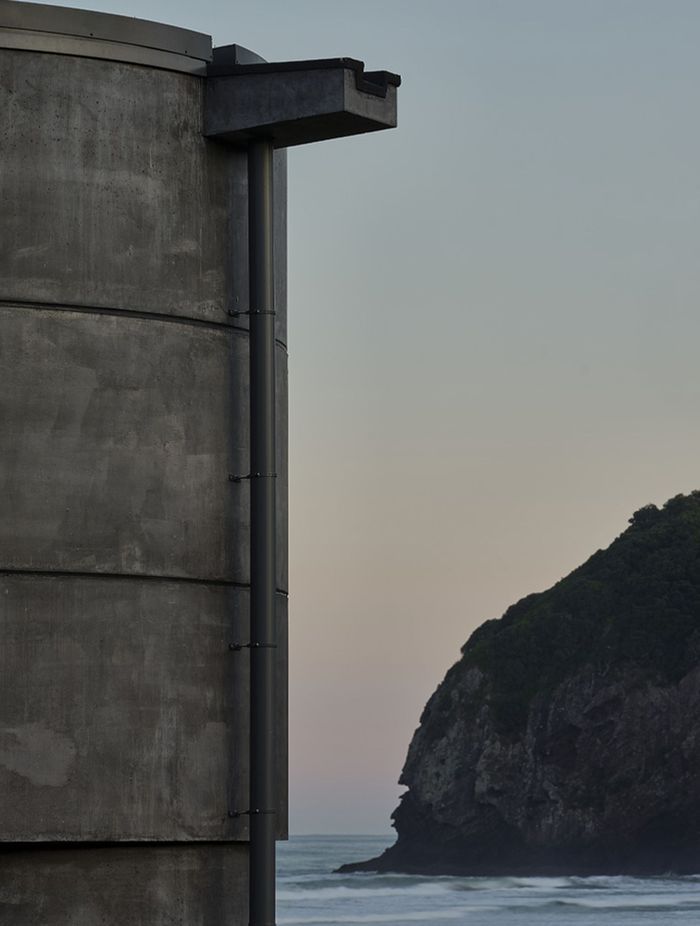North Piha's sculptural surf life-saving tower is both a sanctuary and a stage
United North Piha Lifeguard Service had initially engaged Crosson Architects in 2019 to design their new clubhouse. At the time, further fundraising was still required to build the facility. However, the UNPLS did have the funds to rebuild their surf life-saving tower — another important facility that was due for an upgrade.
The previous tower wasn't originally built on North Piha Beach — it had already lived a former life. Built predominantly of steel and timber, the tower hadn't worn too well in the corrosive environment. So longevity was a key factor in the club's brief for the new tower.
"It had to be something that would stand the test of time both materially and architecturally — what a great brief", shares Ken Crosson, Design Director of Crosson Architects.
In addition, the brief asked for unobstructed views of the beach for surveillance and a view back to the clubhouse (which is currently being rebuilt). Crosson Architects' responded with a cylindrical design made of prefabricated concrete forms. This solution would be capable of enduring the harsh coastal conditions; it would allow for expansive sightlines and also lend a piece of sculptural art to the rugged beach.
The architects respected and responded to the art and craft of the local iwi, Te Kawerau ā Maki, whose designs often respond to their coastal environment by incorporating fluid and organic forms. Respectfully, a circular motif was integrated throughout the tower's design — not only in the concrete forms but also through the stairs, various windows, and an oculus in the roof.
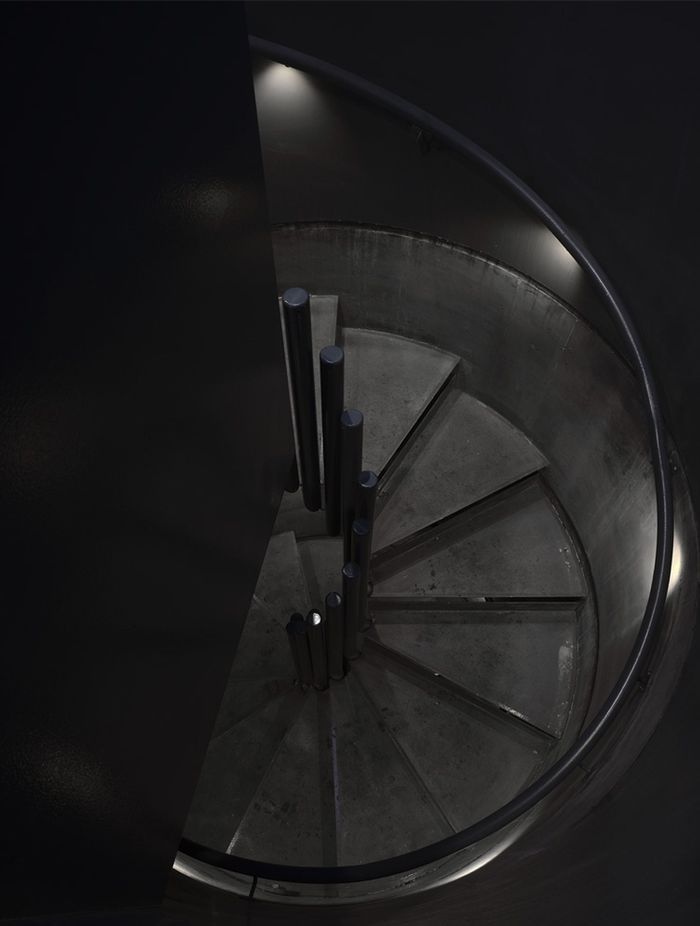
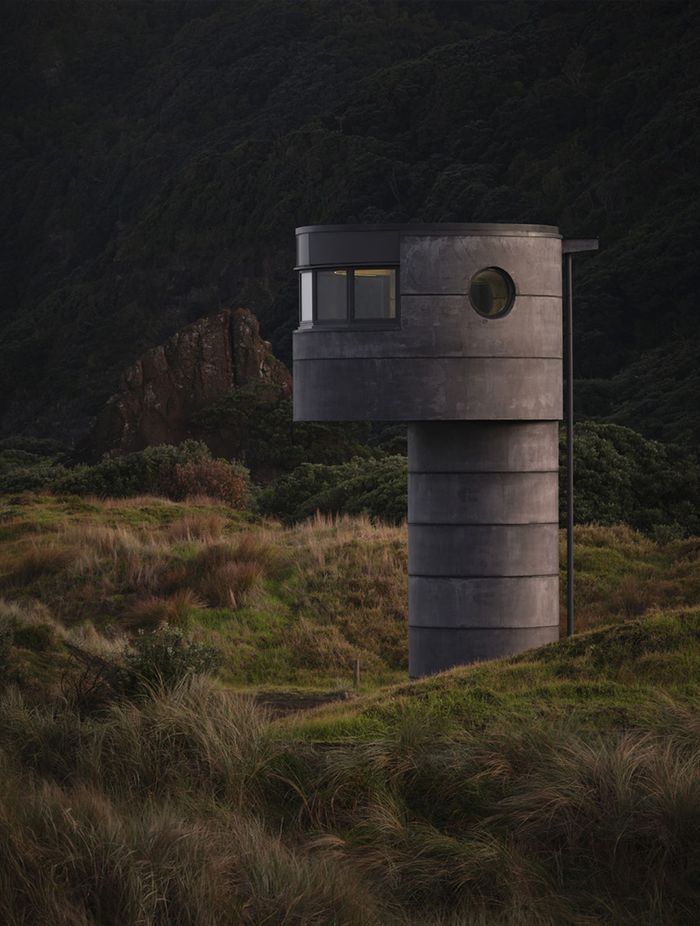
"One of the lovely things that happened during the design process was that the local iwi, Te Kawerau ā Maki, gifted the name Te Pae to the tower, which means 'to perch', and is the perfect name for this little tower", smiles Crosson.
And so it does. Te Pae Surf Life-saving Tower perches quietly amongst the black-sanded dunes of North Piha Beach — its small footprint touching the earth lightly. The base of the tower is made from precast sections that enclose the steel spiral staircase as it ascends to the main floor, which cantilevers out toward the sea.
"Very early on, we decided that the building had to be concrete, and we wanted it to be relatively cost-effective, so we opted for a series of prefabricated concrete forms. These are standard culvert sections, which we've manipulated to make the tower", Crosson explains.
"The circular form allows unobstructed views up and down the beach, with no dead corners. We wrapped the front in a band of windows which give perfect visibility. It is possible to open all or some of these windows, which allows you to 'trim' the space; if the wind is coming from the north, you can open the south windows, and vice versa. So you get protection as well as good ventilation while patrolling the beach. The thermal mass, too, allows a very even temperature inside."
The two circular portholes were also integrated on either side of the front windows, providing visibility back to the clubhouse and the main road. Echoing the nautical style, an oculus in the roof, positioned directly above the spiral staircase, welcomes sunlight into the tower and can be opened to circulate airflow. "It actually creates a venturi, which is great for exhausting air in the warmer months", says Crosson.
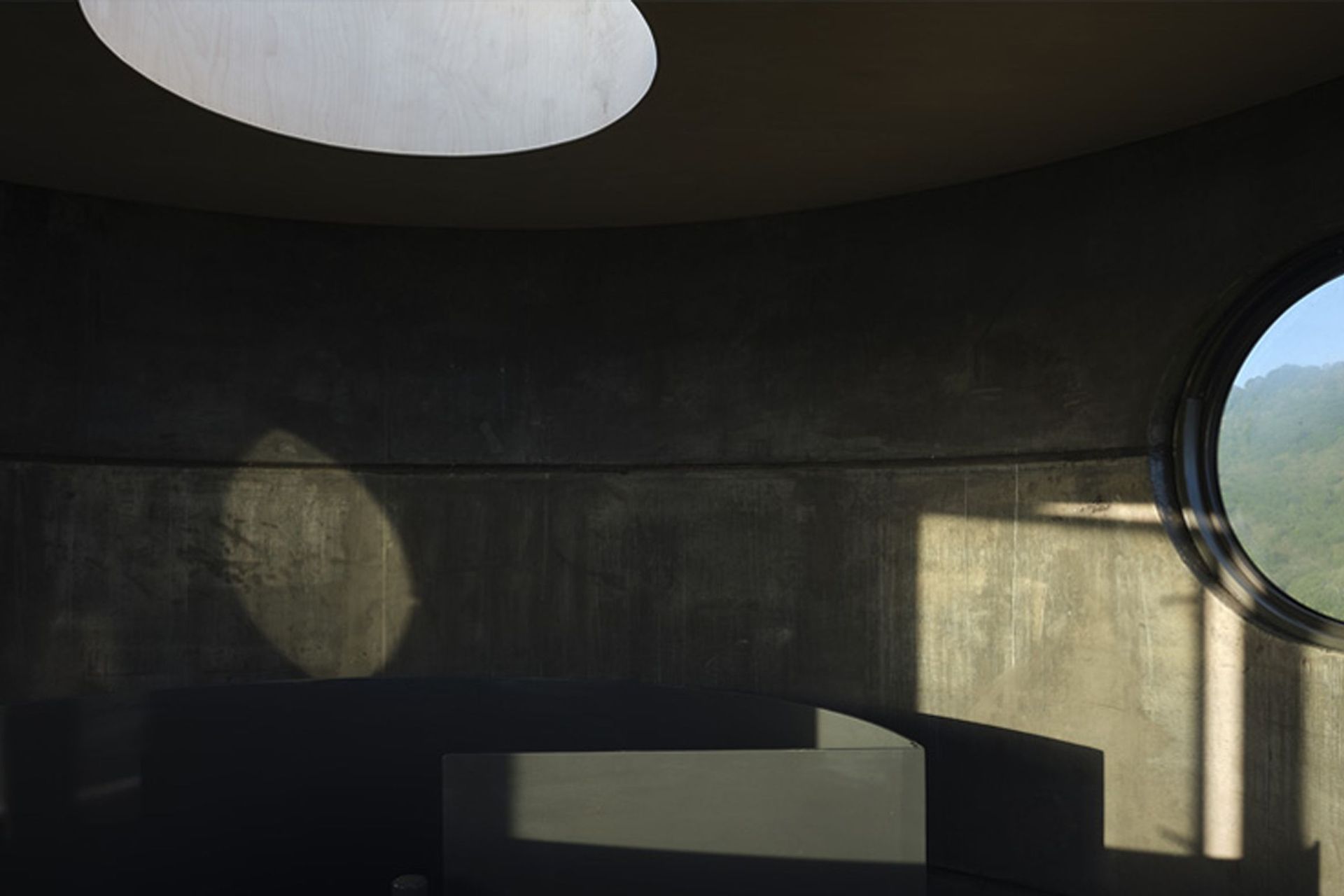
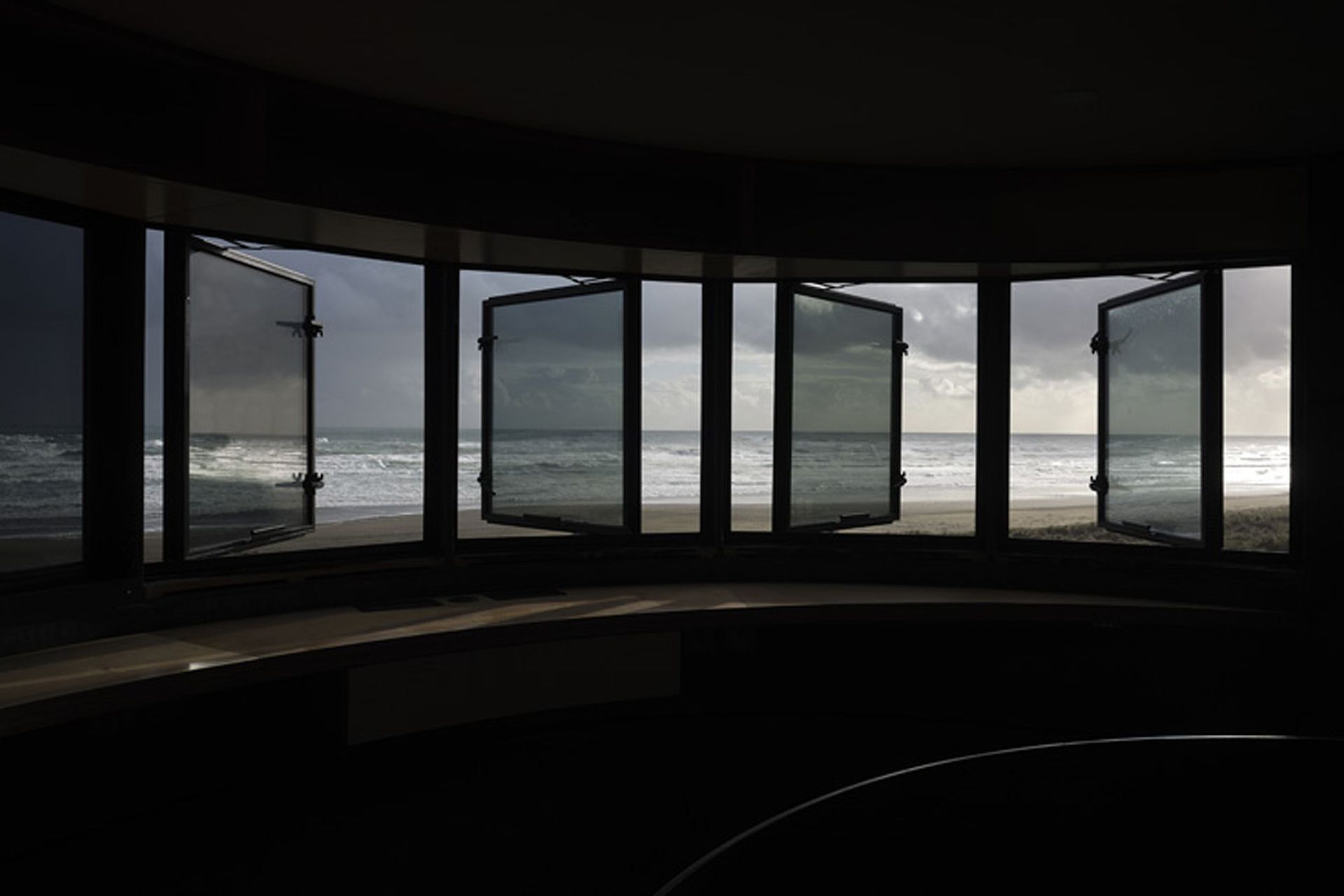
Piha Beach is famously rugged, characterised by its black sand and rocky headlands. The nature of this location played an instrumental role in the design of Te Pae, notably in the tower's colour. Crosson explains, "The colour of the concrete was really important for blending the structure into the context. So we worked with PeterFell to establish the oxide colour.
"I've worked with PeterFell for 35 years; they have a great product and are willing to go that extra mile. I think the concrete blends incredibly well into the landscape; it's got that kind of mottled effect, so you don't get a solid colour; it's not like a skin that you put over the concrete. There's a softness to it."
The oxide used is the darkest in PeterFell's product range: the 699 Super Black. Roughly one-and-a-half tonnes of the rich oxide went into this project, which is around 47 and a half kgs per cube. The product is permanent and maintenance-free, contributing to Te Pae's robust constitution. In years to come, the tower will still appear at one with the black-sanded beach.
Paul Dwight, Regional Manager for PeterFell, is immensely proud of the company's involvement with the project. He shares, "Once we learned about the project, we were very, very proud to donate the 699 SuperBlack oxide, especially because the building is such an important structure for the Piha community".
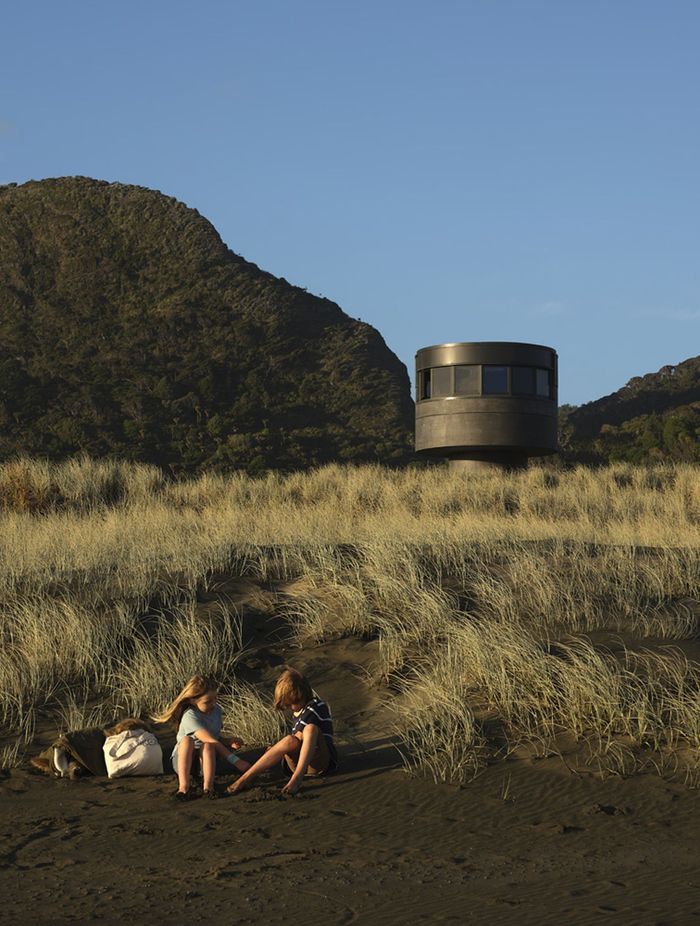
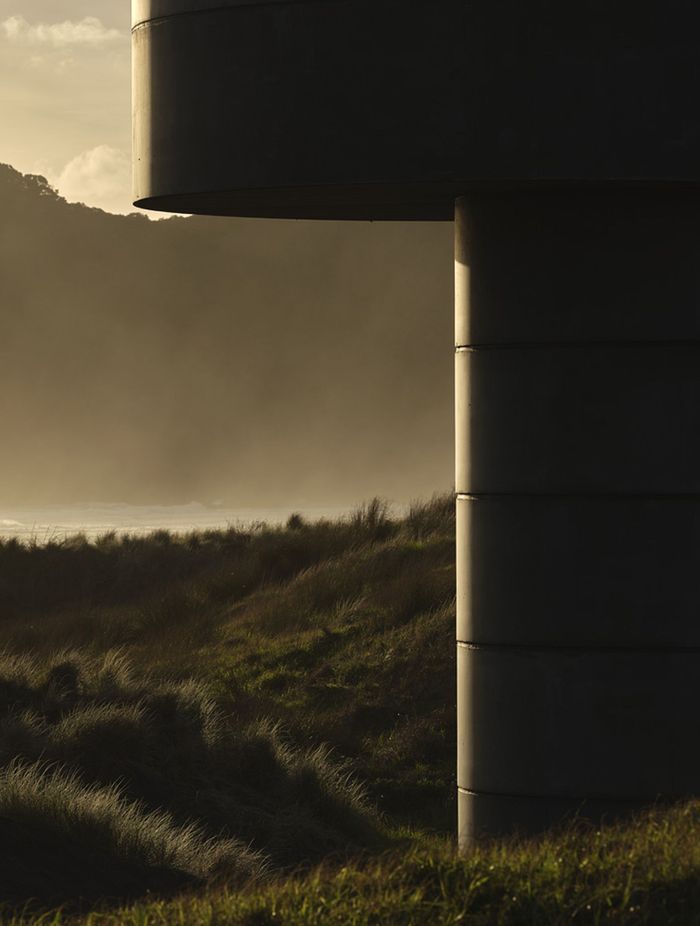
Beyond its architectural beauty, Te Pae is particularly beautiful in its purpose. The building stands to protect the surf club's extraordinary volunteers and, in turn, those who visit North Piha Beach. "While the tower had to be robust, it also had to fulfil a number of roles", Crosson says. "Te Pae had to be a sanctuary because we needed to look after these incredibly important volunteers, but it also had to be a stage, in a sense, because we needed to get really good views up and down the beach."
Despite its small scale, Te Pae plays a massive part in North Piha's community and is a community project through and through. Donations in labour and product were gifted to the project, and it's these generous contributions that enabled Te Pae's creation.
"There was an extraordinary effort from a lot of players to get this tower where it is today", says Crosson. "The club are an extraordinary group of volunteers that spend endless hours here. And within the community, there's an amazing amount of support as well. And within our office, there were a couple of key players, Jerome Buckwell and Sam Knight, who did an awesome job running the project and getting it built."
Explore more projects by Crosson Architects.

